Starvation syndrome is a physical complication of an eating disorder. As we have talked about before on the blog, eating disorders begin as a mental health concern and can quickly deteriorate into a physical health concern. This blog post discusses several starvation symptoms as well as common ways to help combat these uncomfortable symptoms.
Watch the Video Here!
What is Starvation Syndrome?
Starvation syndrome can occur in individuals of all weights when the body does not get the energy it needs for an extended period of time. It is commonly seen in people living with eating disorders such as anorexia nervosa, bulimia nervosa, and binge eating disorder because they may restrict food, irregularly eat, and/or compensate for ingested calories through over-exercising or forcing the body to eliminate food quickly.
How Do I Know If My Child Has Starvation Syndrome?
It is important to remember that starvation syndrome can impact folks of any weight, and with any eating disorder. This means no matter the diagnosis, if your child is living with an eating disorder they may experience starvation syndrome. If you believe your child may be living with an eating disorder, we strongly recommend that you reach out to a qualified healthcare member for help. This may include your family doctor, a dietitian nutritionist, or a pediatrician, or a psychologist who specializes in children and/or eating disorders.
Starvation Syndrome Symptoms
The symptoms that are commonly associated with eating disorders are often symptoms of starvation syndrome. At Change Creates Change, we often see that it is these starvation syndrome effects that raise the red flag for parents that an eating disorder is present in their child. Starvation syndrome can affect all aspects of someone’s life. It impairs our physiological, emotional, cognitive, and social functions. When the body does not get the nutrition it needs, systems in the body begin to shut down to preserve life. The big indicators that usually are seen first are a slowed heart rate, lowered blood pressure, decreased concentration, increased irritability – just to name a few.
Signs of Starvation Syndrome
Physical Changes
The physical changes that may take place can affect many organs and systems throughout the body. Less visible physical changes that can occur include: reduced heart muscle mass, slower basal metabolic rate, extreme fatigue, weakness, dizziness, feeling cold all the time, and decreased hormone levels. More visible physical changes that can occur are: hair loss, blackouts, fluid retention, low libido, and dry skin.
Emotional Changes
Emotional changes often take place as well and can manifest themselves as depression, anxiety, irritability, or loss of interest in life. People experiencing starvation syndrome often feel ‘flat’ or report feeling ‘numb’. Brain function can also be impaired, which may result in decreased concentration, impaired comprehension, diminished judgement and ability to make decisions, obsessive thoughts, and decreased alertness.
Behavioural Changes
Starvation syndrome can also affect your child’s friends and family as those affected may lose their sense of humour, withdraw from relationships, and/or neglect personal hygiene. It is often seen that people living with an eating disorder, especially those affected by starvation, isolate themselves. This may manifest as your child avoiding social settings, such as eating in the cafeteria, or joining family dinners. Additional possible behaviour changes to look out for may include: frequent thoughts about food, strict meal planning, very fast or very slow eating, increased hunger, binge-eating, hoarding, and increasing the use of spices or condiments.

How to Treat Starvation Syndrome
Although starvation syndrome has a long list of potential side effects, remember that it can be treated and reversed. Once your child has been seen by a qualified healthcare professional to be assessed and monitored, an individual treatment plan will be created. The treatments to reverse starvation syndrome include physical re-nourishment, weight restoration, nutrition rehabilitation and psychological therapy to address the negative feelings about food and body-image.
The Refeeding Process
Physical re-nourishment, also known as the initial refeeding process, is the foundation for other positive changes. It involves establishing regular eating habits and consuming nourishing meals. The symptoms of starvation may persist in the beginning of re-nourishment, but they will disappear eventually.
Mechanical Eating
Regular eating is important as it brings the body back into a state of balance. Humans function best when we eat about every 3 hours throughout the day. When recovering from starvation syndrome, a registered dietitian nutritionist may be recommend to “eat by the clock” at the beginning to get your child’s body used to consuming food regularly. For most folks, the goal is to aim for 3 meals as well as and 2-4 snacks each day. Preparing meals in advance may be helpful with staying on schedule.
At first, your child may feel uncomfortable eating every 3 hours, but their digestive system will adapt over time and it will become easier. Once a regular eating routine is in place, a dietitian nutritionist may recommend to begin to increase portion sizes and broaden food choices. It may also recommended that your child drinks fluids between meals to ease digestion, but not so much that they are too full to eat their next meal.
Recovering from starvation syndrome is a long, but doable process. Your family will probably hit a few bumps along the way, but remember that recovery is possible. Our team of registered dietitians and therapists at Change Creates Change Eating Disorder Care believe in empowering parents to support their child in their eating disorder recovery. If you believe your child may be showing signs of starvation syndrome or an eating disorder and you are not sure where to turn first, you can book a free 15-minute consultation call with us.
*Reserved for Canadian residents.

